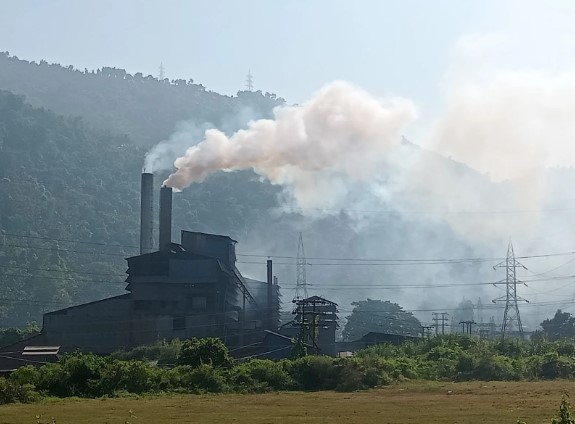
A small industrial town situated along the Meghalaya-Assam border has earned itself the tag of being the world’s most polluted city in the world. The question is why? How are the residents dealing with this pollution? What are the state governments of Assam and Meghalaya doing?
The Swiss air technology firm IQAir recently released the World Air Quality Report 2024 based on data collected from over 40,000 air quality monitoring stations across 138 countries.
According to this report, the PM2.5 reading of an alarming 128 micrograms per cubic meter in Byrnihat ranked it at the top, beating Delhi.
The Meghalaya State Pollution Control Board (MSPCB) has flagged violations by several industries multiple times.
In a suo-moto statement on Byrnihat pollution, Meghalaya Chief Minister Conrad K Sangma, today, told the Assembly during the ongoing budget session that from January to March first week, 2025 – the overall air quality index of Byrnihat in Meghalaya was observed to be satisfactory.
The MSPCB conducted surprise inspections at several units in Export Promotion Industrial Park (EPIP) and 13th Mile on January 24, 27, and 31, 2025, and 5th of February 2025.
The inspections revealed violations of pollution norms, including heavy emissions from chimneys. “As a result, the board issued closure notices to seven industrial units and imposed environmental compensation on two industrial units,” the chief minister said.
Furthermore, Sangma said that consequent to the closure of seven units in Meghalaya from January 29 to 11th March 2025, the Air Quality Index (AQI) generated from the Air Quality Monitoring Station installed at the Central Academy for State Forest Services, Byrnihat Assam still reflected the AQI as poor or very poor during most of the day.
“This indicates that the major source of pollution may be attributed to industries and other activities along Assam side,” he remarked.
The Byrnihat Industrial Area in Assam that runs along the Byrnihat town in Meghalaya has been designated as a critically polluted area by the Central Pollution Control Board (CPCB) Delhi.
It was pointed out that there are 20 red-category industries in Byrnihat Assam as compared to five in Byrnihat, Meghalaya.
ALSO READ:
How local youth can become key actors in biodiversity conservation
Indigenous youth from Meghalaya discuss initiatives to enhance climate resilience in Rome
Building a Greener Shillong: Stakeholders Unite for Low-Carbon Construction Practices
As per the direction of the National Green Tribunal (NGT) and CPCB, the Assam PCB has prepared action plans and adequate measures have been taken to restore and improve the environmental quality of the Byrnihat area of Assam.
The MSPCB has engaged the Council of Scientific and Industrial Research- National Environmental Engineering Research Institute, Kolkata to conduct an Emission Inventory & Source Apportionment study of Byrnihat.
The chief minister informed that he has written a letter to his counterpart in Assam, Himanta Biswa Sarma, flagging this critical issue and requesting that a joint action plan be made in consultation with experts and different officials from both sides as Byrnihat, being a border town, as industrial units of different categories on both sides.
What are the health hazards?
The health implications of prolonged exposure to high PM2.5 levels are severe. These fine particulate matter pollutants can penetrate deep into the lungs and bloodstream, leading to respiratory diseases, heart problems, and even cancer.
Recently, residents of the Byrnihat area in Ri-Bhoi took to the streets to protest the air pollution caused by factories in the industrial zone, as the local population grew weary of the thick black smoke emitting from the industrial chimneys.
Chief Minister Sangma has assured the House, especially the citizens of Byrnihat, on both sides, that the government is concerned about this issue and will take every step to ensure that this issue is resolved or minimized to the maximum level.
“The health and overall environment of that area is an important concern for the government… A joint action plan will be developed once officials from both the states meet to work out a plan of action (sic),” Sangma said.







